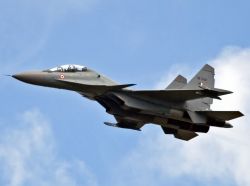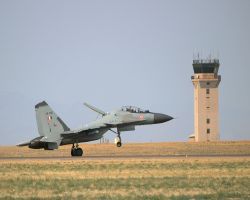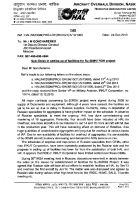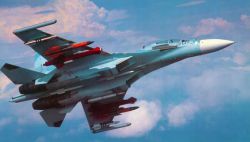India May Expand Su-30MKI Order Beyond 272

Going by the pace at which the Indian Air Force (IAF) is expanding bases for the Sukhoi-30MKI fighters, ordering more of these Russian-made aircraft looks a distinct possibility.
The expansion of the Su-30MKI fleet may happen irrespective of the progress in the MMRCA deal in which negotiations with the French manufacturer Dassault are on. India had in 2002 ordered 230 fighters and a further 42 had been ordered in 2012.
The Ministry of Defense has already announced plans to set up new bases to house the aircraft that are expected to be delivered up to 2018-19. The rapid expansion of bases housing the Sukhois while at the same time curtailing MiG-21 operations is a clear indication of the important role the Su-30MKI is playing for the IAF and the need for even more aircraft of this type in future.
Some 100 Sukhois will be spread out to bases such as Thanjavur in the deep south, Chabua in the northeast and Pune in western India, according to media reports. "Thanjavur airbase is going to be another strategically important airbase of the Indian Air Force. By stationing our frontline fighter aircraft Sukhoi at Thanjavur, IAF can protect vast area of interest", India’s defence minister, AK Antony said after inaugurating the airbase on March 27, 2013.
Aside of the air dominance function for which the Sukhois had been originally procured, they are being utilized for interception and for reconnaissance. Recently, a Su-30 MKI had been scrambled to intercept an unidentified flying object entering Indian airspace form the western border. Some 4-8 Su-30MKIs are being tasked with strategic reconnaissance along the India-Pakistan borders with EL/M-2060P SAR pods, various reports said.
The fitment of the BrahMos cruise missile to the Su-30MKI will add another dimension to this vastly capable fighter. Reports say that some 40 Sukhois will be modified to carry this lethal armament which can function as an air-launched precision strike missile.
The induction of the Su-30MKIs seems to have increased the confidence and capability of the IAF as can be noted from this statement of the former IAF Chief NAK Browne, “right now we have 34 combat squadrons and in spite of these draw downs of the MIG-21s, we are supplementing them with the Su-30 squadrons”. The former chief had told a television network on October 5, 2012, “What’s going to happen is that at least in the 12th plan which finishes in 2017 we will continue to maintain 34 squadrons. They go up a little bit, up and down but they will remain at 34 squadrons but with far greater capability than even what we have today.”
As of March 2013, the IAF had a fleet of 194 Su-30MKI aircraft but this number will grow to 272 after India placed another order in December 2012 for 42 aircraft about 10 months after declaring Dassault winner of the MMRCA competition. The licence-manufacturing program of the Su-30MKI is expected to conclude in 2018-19. “We hope to form 14 squadrons of Su-30MKI fighters by 2018. By this time we will have 272 such planes in service”, an unnamed HAL official was quoted as saying by Itar-Tass on February 24, 2014.
With the Su-30MKI getting increasingly entrenched into the IAF’s combat capability, provisions will have to be made for maintaining SU-30MKI utilization levels. As the number of sorties increase, so also will the requirement for maintenance and overhaul for which aircraft will have to be withdrawn from service.
The Su-30 MKI planes have not been without their share of problems. Three crashes, in 2009, 2011 and 2013 have forced the IAF, Irkut and HAL to sit down and find solutions to the problems which came to fore after the accident investigations. The good news is that the past year has been relatively problem-free despite increased sorties.













